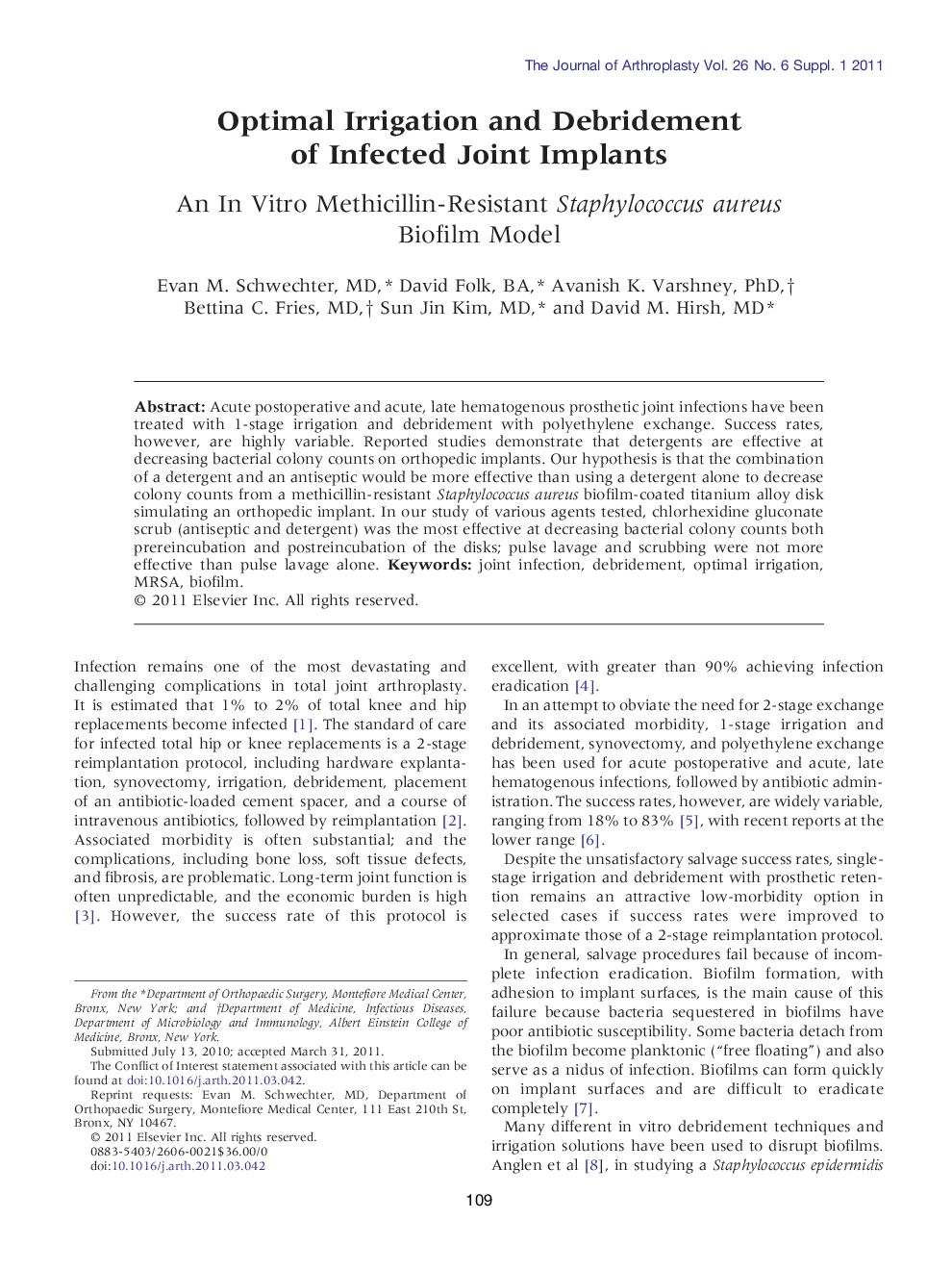| Article ID | Journal | Published Year | Pages | File Type |
|---|---|---|---|---|
| 4062988 | The Journal of Arthroplasty | 2011 | 5 Pages |
Acute postoperative and acute, late hematogenous prosthetic joint infections have been treated with 1-stage irrigation and debridement with polyethylene exchange. Success rates, however, are highly variable. Reported studies demonstrate that detergents are effective at decreasing bacterial colony counts on orthopedic implants. Our hypothesis is that the combination of a detergent and an antiseptic would be more effective than using a detergent alone to decrease colony counts from a methicillin-resistant Staphylococcus aureus biofilm-coated titanium alloy disk simulating an orthopedic implant. In our study of various agents tested, chlorhexidine gluconate scrub (antiseptic and detergent) was the most effective at decreasing bacterial colony counts both prereincubation and postreincubation of the disks; pulse lavage and scrubbing were not more effective than pulse lavage alone.
